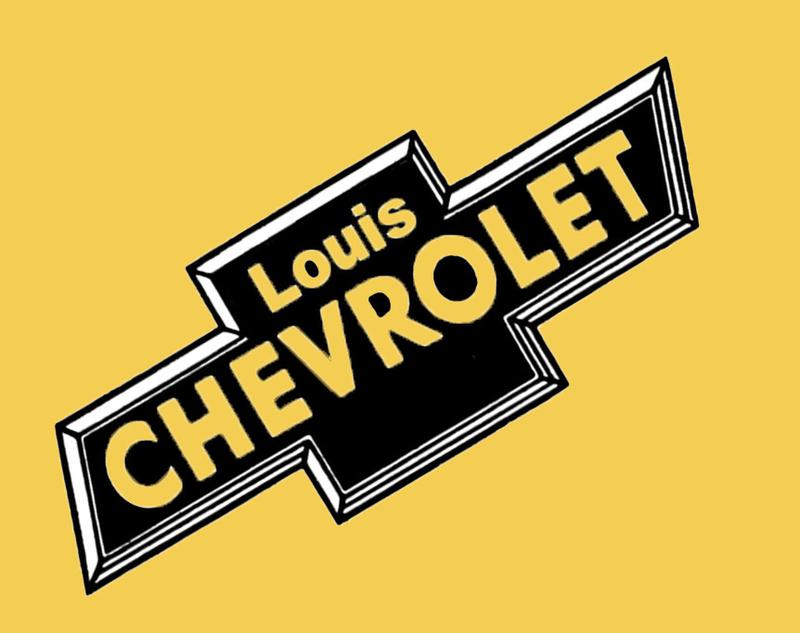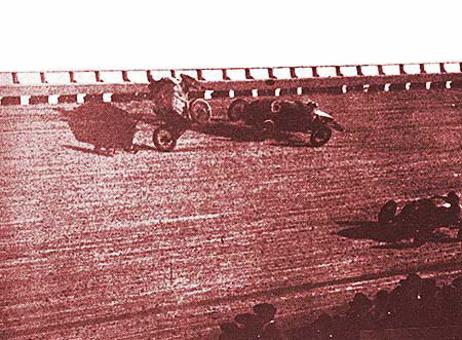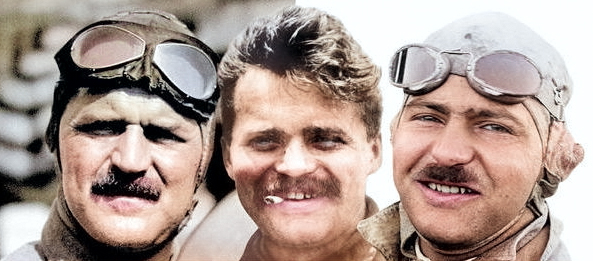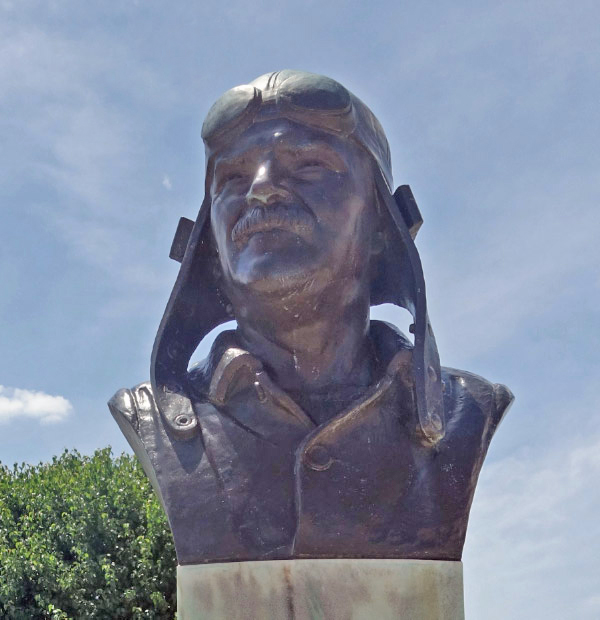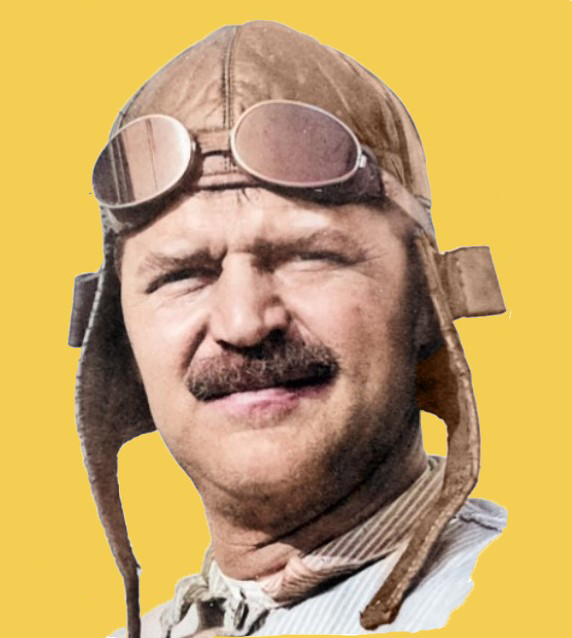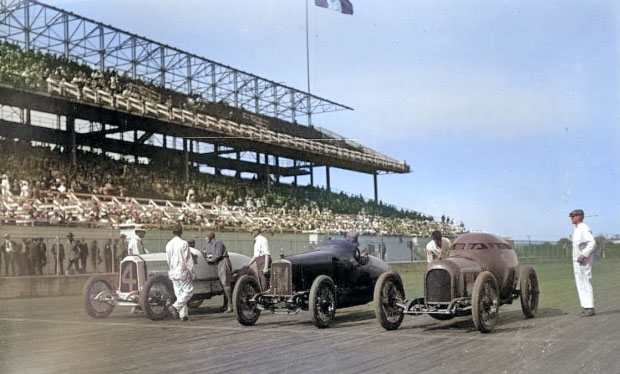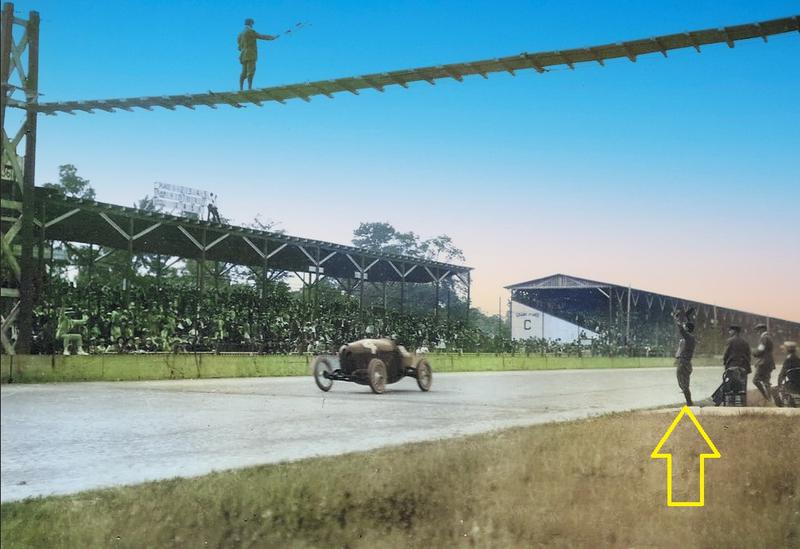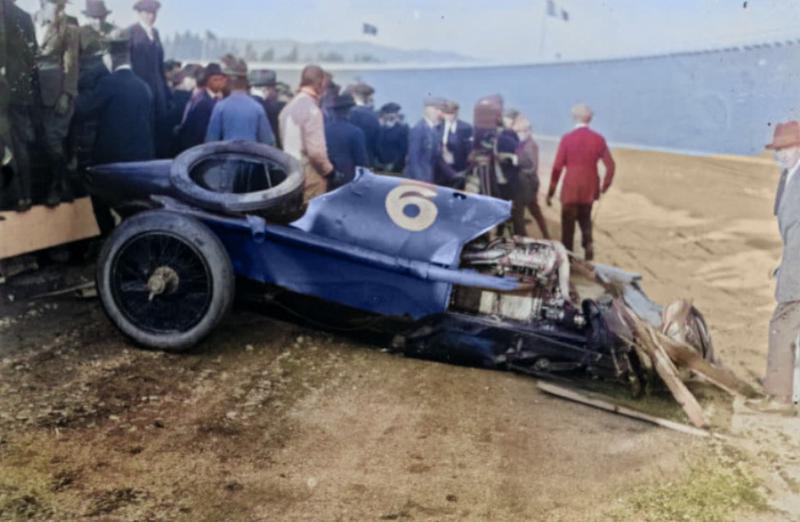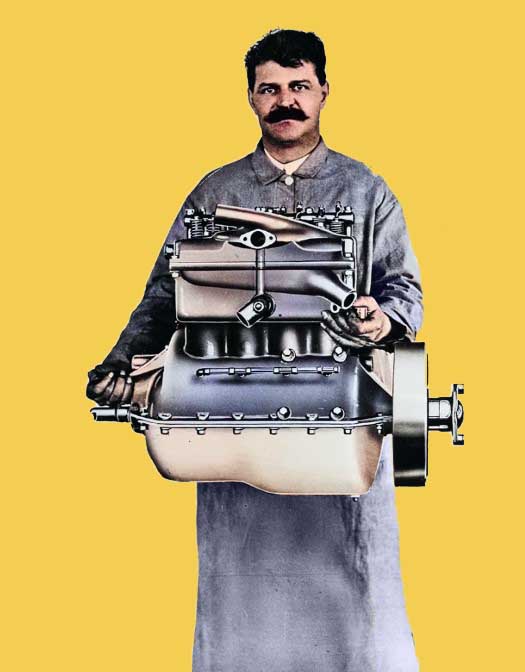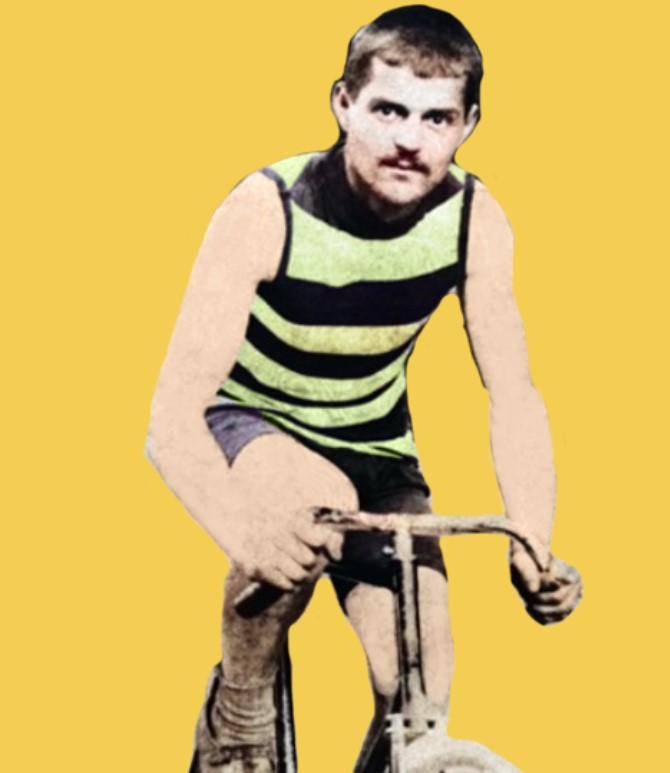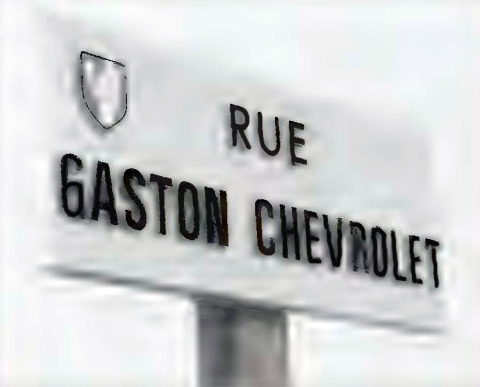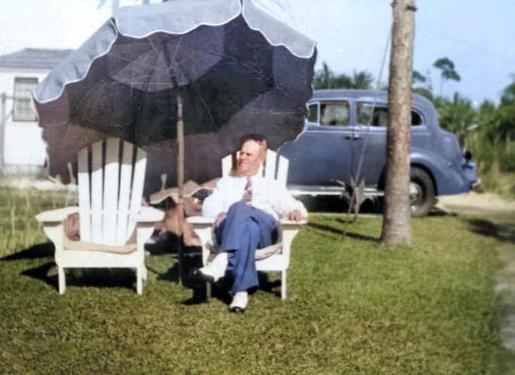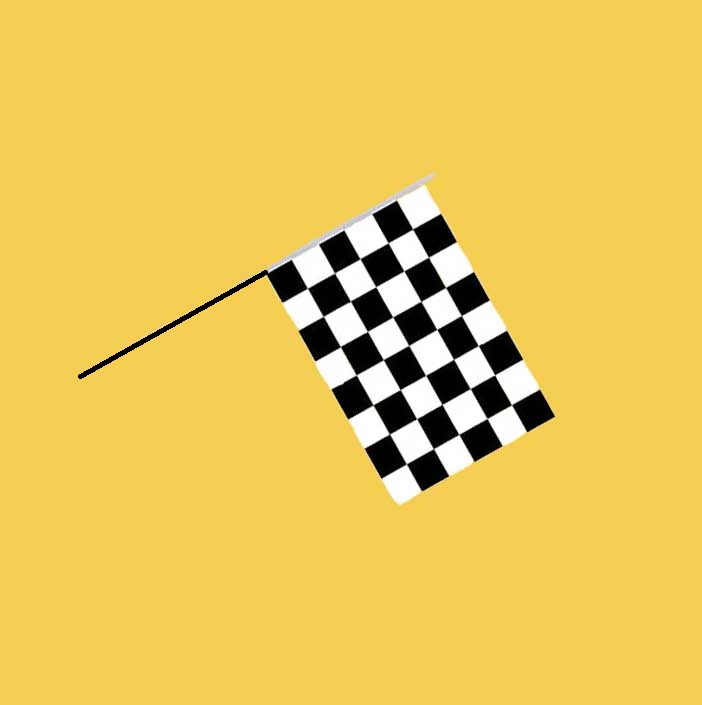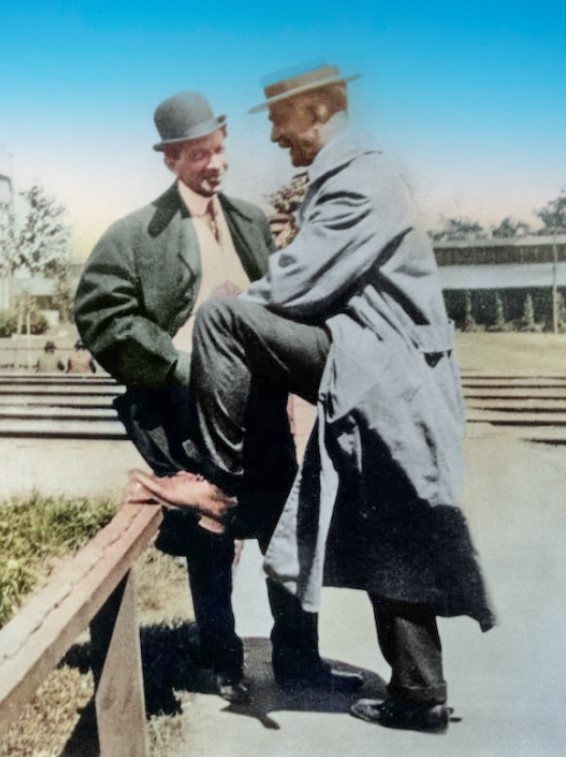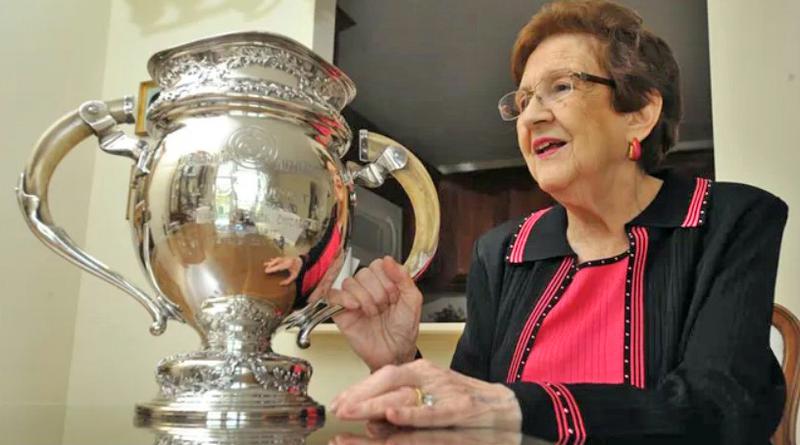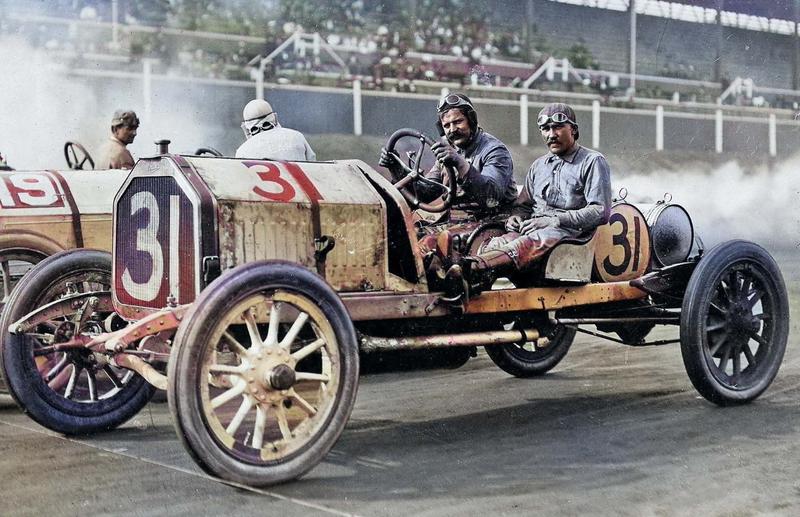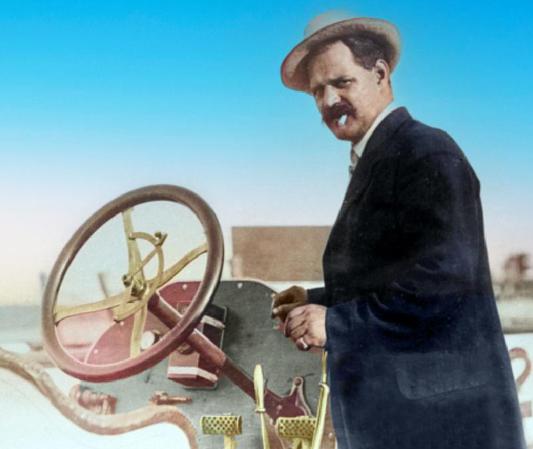If ever there was a character that had racing seared into his soul and high octane coursing through his veins, it was Louis Chevrolet. Like his automotive rivals, he had phenomenal mechanical aptitude but was always more enamored with racing automobiles than manufacturing them. The Swiss-born Chevrolet seemed destined to share a fate similar to his peer David Buick in that despite the fact that over 200 million cars were to bear his name, he benefited very little from its stunning success.
Louis Chevrolet, the eldest of the famed Chevrolet brothers, would early in life touch the star of celebrity only to find himself relegated later on to the shadows of forgotten fame. Much like his rival and respected friend Henry Ford, Louis cared more about accomplishment than money. Whenever he made a windfall he would invest it in his next project only to have fate deal him yet another cursed hand.
Only six months after tasting the fruits of victory at the Indianapolis 500 and well on his way to becoming a legend himself, Louis's kid brother Gaston is killed racing on a wooden track in California. (right)
Louis and Arthur were devastated. Louis vowed to never race again. Racings most celebrated trio of brothers, who had pushed and prodded each other past new and illustrious boundaries and were at the pinnacle of their careers, now found themselves at a loss they could not overcome.
Gaston Chevrolet
The legendary Chevrolet brothers (Louis, Arthur and Gaston) were all world class racers who cheated death many times over with their hell-bent-for leather racing demeanor.
The long, winding road that was the life of Louis Chevrolet was full of dangerous curves and steep hills, all of which he navigated with pugnacity but tragedy lurked behind every bend of his life. Louis not only welcomed peril, the more dangerous the better. Faint hearted drivers didn't exist in those days, nor did they succeed. With an open cockpit, no roll bar, no helmet and fly-by-night equipment, it was a Pandora's box of possibilities as drivers sailed off into unknown peril.
Louis, having raced in several Indianapolis 500s, once set the world land speed record of 111 mph in 1905 and succeeded in breaking his own record the following year at 119 mph. Louis Chevrolet won ten National Championship races from 1909 through 1919. In those days, successful racers held a 'rock star' like status, even more so than today because cars were in their infancy.
The bronze bust of Louis Chevrolet fittingly sits at the Indianapolis Hall of Fame Museum followed by his lifelong saying, "Never Give Up."
The famous Match race of racing rivals between Louis Chevrolet in his Frontenac Racer (Middle car), Barney Oldfield in his "Golden Egg" (right) and Ralph De Palma in the twelve-cylinder Packard (white # 4 on left) in August of 1917 at Sheepshead Bay in Brooklyn. De Palma would reign victorious in front of 40,000 fans as Louis Chevrolet developed tire problems. The track, as noticed in the photo, is made of wood.
1917 Match race - Brooklyn
Gaston Chevrolet takes the coveted checkered flag at the Indianapolis Motor Speedway in 1920 as big brother Louis (arrow) cheers him on.
The remnants of Gaston Chevrolet's car - The dynasty that was the Chevrolet brothers had been shattered at its apex. Racing is a dangerous and chancy sport and you fail to respect it at your peril. Perhaps because of his boyish youth, having already cheated death many times, Gaston believed immortality was his to keep. Never the less, every profession has its Mt. Everest to climb. Gaston, having won the Indy 500 at the age of 27, will always be remembered for having done just that, having climbed his Everest.
How it all Started
Louis Chevrolet in retrospect - Often disappointed, never discouraged, from the first race to the last, always displayed the same nobility of style and the same unquenchable winning fire that made him a racing Tsar.
But for Louis, throughout his life there was always the constant, never ending reminder that everywhere he went he saw his name rolling by on the back of a car that he never profited from. Had he stayed on with Durant and Chevrolet Motor Co., he would have had the riches of an emperor. Louis took solace in his endless racing exploits and the legendary name the Chevrolet brothers had carved out in the annals of history. Louis' insistence that even in defeat you must have honor, for victory without honor has a hollow ring. Irregardless of the tragedies he incurred in life, to have climbed the glorious peaks that he did, Louis wouldn't have traded places with a king.
Louis Chevrolet demonstrating his light weight racing engine.
Ironically, the fabled careers of Louis Chevrolet and the Dodge brothers both began with a bicycle. Left, a very young Louis Chevrolet was a cycling champion in France. It was here that he first demonstrated the fanatic will of a competitor and the 'need for speed.'
Louis was born in Switzerland but grew up in France. His father was a watch maker which impressed upon Louis the value of precise machining, a trait that would benefit him greatly later on. Louis grew up in a large but poor household. In a story that has a familiar ring to it for the time period, he had to quit school at the age of 11 and take various jobs to help the family survive, so the DNA of hard work and mechanical aptitude was established at an early age.
In the late 1890s, as automobile prototypes began to leap from the drawing board into a tangible vehicle, Europe was considered ahead of the United States technologically at this point in time. America needed expertise and welcomed knowledgeable immigrants. Louis 'jumped the pond' in 1900. When his father died unexpectantly in 1902, Louis arranged for his siblings and mother to come join him in New York.
Louis quickly made a name for himself as a race car driver and engineering genius. Several times he set and then reset his own world record for the timed mile.
The man with the Gallic mustache or "cookie duster" had a temper if rubbed the wrong way. His stubborn demeaner was more than willing to listen to reason, as long as it was his reason.
A street named in honor of Gaston in the Chevrolet brothers home town of Beaune, France
The Final Flag
Louis Chevrolet late in life, alternating his retirement between Florida and Detroit. Having survived countless car crashes, strokes, heart attacks, a brain hemorrhage and a leg amputation, he was a true warrior and held to his conviction to the bitter end, "Never Give Up."
The Strange Odyssey of Louis Chevrolet
The elegant 1913 Chevrolet Type C Classic Six. Of the over 200 million cars that bear Louis Chevrolet's name, the Type C is the only one that he designed and built. Louis introduced many firsts here. The Type C was the first car to sport a counter balanced crankshaft. The first car to have the shifter mounted in the middle of the floor and the first out-of-the way emergency brake lever under the dash.
The row between Durant and Chevrolet started with their philosophy of what America wanted. With the cheap but sturdily built Model T becoming immensely popular, Durant wanted Louis to design a inexpensive competitor. But Louis only understood big, fast and shiny and did not want his name associated with a 'common man's' car. Sometime later, with their friendship teetering, Durant made a comment about Louis’ incessant smoking habit. Since Louis was an executive with G.M., Durant wanted him to look the part. Louis was taken back and in a final, parting barb to Durant, he declared,
"I sold you my automobile, I sold you my name, but I shall not sell my personality to you."
Louis then packed up his cigarette case and left the company.
Louis Chevrolet (Right) and Billy Durant in happier days.
Folklore has it that in 1896 a rich American came into his bicycle shop requesting a complicated repair to his steam powered tricycle. The American was so impressed with the young man's ability he advised him to "come to America. There's work for you there. If you ever get there, look me up." It is believed to have been William Vanderbilt, of the fabulously wealthy New York Vanderbilts. Much like Henry Ford's first encounter with a steam powered thresher, this was the seminal moment in Louis' life. Louis never forgot the meeting or the advice.
By 1911, Louis' racing exploits made him world famous. This was not lost upon the entrepreneur Billy Durant, who entered into a partnership with Louis in Detroit that created the Chevrolet Motor Car Company. Louis received stock in the company but foolishly signed away the rights to his name to Durant. It was a mistake that would haunt him the rest of his life.
Using Chevrolet's global name, Durant contracted Louis to design a car to compete with the inexpensive and wildly popular Model T. Philosophically out of phase with Durant, Louis designed and built a large and expensive six-cylinder vehicle. Durant, much to the chagrin of Louis, had the car drastically scaled down. Louis was furious and in 1913 the two parted company. Louis sensed that the fledgling Chevrolet Motor Co. wouldn't last long so he sold his shares. It was yet another colossal mistake.
Louis Chevrolet's granddaughter, Mrs. Renee Chevrolet Goeke, still proudly displays the prestigious Fort Dearborn trophy that Louis won in 1917.
Louis Chevrolet in his element, at the wheel and starting line of yet another perilous race. With racing in its infancy, the prize money probably couldn't fill your gas tank much less pay your hospital bill. These men raced for pride in name.
As noticed in the photo, both driver and mechanic are at the mercy of the track as there is no safety protection at all.
Louis' reckless driving style may have made him a world-famous racer but he would spend significant time in various hospitals mending his mangled body after numerous wrecks at the race track.
Louis won ten National Championship races from 1909 through 1919, perhaps the most notable being the 395-mile Cobe Cup race in Lowell, Indiana, in 1909.
To put it in a more-modern day perspective, Louis was the Dale Earnhardt Sr. of his day. Intimidating, intense and inherently successful.
Louis and the ever present cigarette dangling out of the left corner of his mouth which irritated some, notably his powerful partner Billy Durant. The combination of Louis' cigarettes and his stubborn streak would cost him a king's ransom.
Louis immediately went back into racing. “I couldn’t sit at a desk unless the desk had tires and a motor. I’m used to going fast and seeing the world reel backwards beneath the wheels of my car. I feel it would be very much like caging a wild bird, for I never could stand a life of inactivity.”
